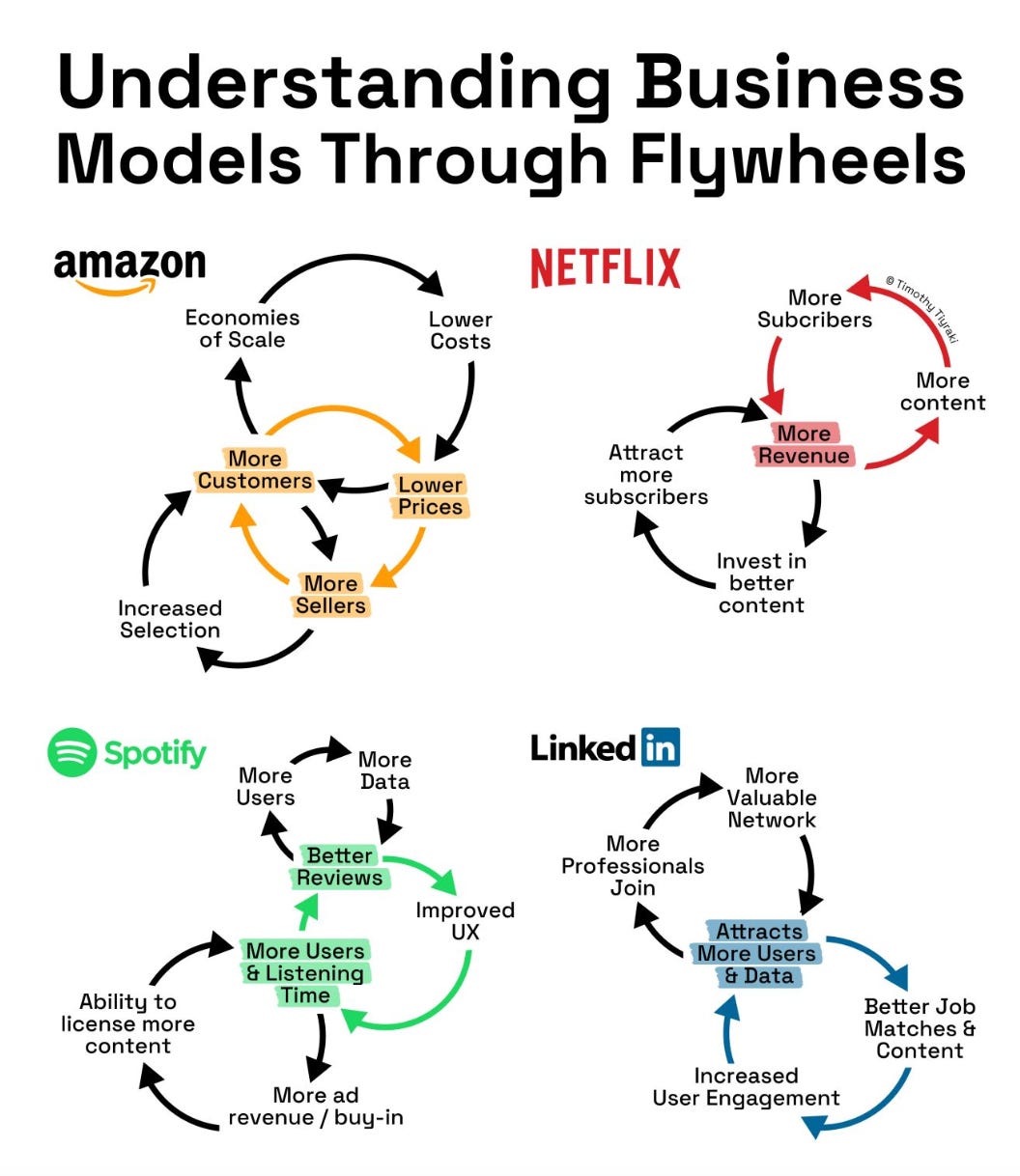Let’s talk Strategy
The concept of flywheels has come up in a few different conversations with people and therefore I wanted to take a deeper dive into this topic and how it relates to strategy.
The flywheel effect in strategy design is about creating loops where each component of your business strengthens the next, generating continuous momentum and long-term success.
It means that instead of relying on one-off wins or short-term tactics, a flywheel helps businesses compound growth and scale over time.
What does this really mean?
It refers to a business approach that focuses on creating a continuous cycle of customer satisfaction, retention, and advocacy.
Where positive experiences drives further growth by generating referrals and repeat business, essentially building momentum like a spinning flywheel.
This seems particularly important to me in strategy design for start-ups finding product market fit, to scale.
How flywheels work in Strategy
A flywheel consists of interconnected activities that drive growth, efficiency, and performance. When each element feeds into the next, the business moves forward with increasing speed and reduced friction.
A strong business flywheel usually follows this structure:
1️⃣ Deliver value: Build great products/services that solve real problems.
2️⃣ Attract customers: Strong value leads to customer acquisition and brand trust.
3️⃣ Enhance experience: Happy customers lead to referrals, reviews, and loyalty.
4️⃣ Drive growth: Increased demand allows for reinvestment in innovation, talent, and expansion.
5️⃣ Reinforce the model: More investment leads to a stronger value proposition, restarting the cycle.
As the image above, shared by the fantastic Timothy, demonstrates, Amazon’s flywheel was designed around customer obsession and operational efficiency:
Lower prices → more customers → higher sales volume → better economies of scale → lower costs → reinvest in faster delivery and better experience → attracts more customers → repeat.
How can you design flywheels?
To design your own strategic flywheel, start by asking:
What is the ultimate value we deliver to customers?
What problem do we solve better than anyone else?
Why do customers choose us over competitors?
Your flywheel should be built around the core driver of value in your business.
Next, you want to look at the key components that fuel your business growth, including:
Customer acquisition – How do you attract new customers efficiently?
Customer experience & retention – What makes customers stay and refer others?
Revenue & reinvestment – How does growth allow you to improve your offering?
Operational efficiency – What makes your model scalable?
Then, you want to ask:
When we improve X, does it naturally strengthen Y?
Which actions trigger more growth without constant input?
How do our efforts reinforce themselves over time?
Finally, identify and remove the friction points where momentum slows down by asking:
Where do we struggle to scale?
What slows down our growth loops?
Are there inefficiencies that prevent self-reinforcing momentum?
How can I use data and feedback loops to accelerate the flywheel?
Business isn’t a single action for growth, as you have to build systems that sustain momentum.
I am finding this topic symbiotic to strategy design with start-ups looking to find product market fit, with different products and services in new markets and geographies.
What are your experiences with flywheels?
I partner with ambitious leaders and entrepreneurs scaling companies in Sports & Human Performance to provide Strategic consultancy.
Ready to uncover your path to purposeful sustainable growth? Let’s talk.
As always, if you enjoyed this content then feel free to share widely.
Nic x
Find me on Linkedin



